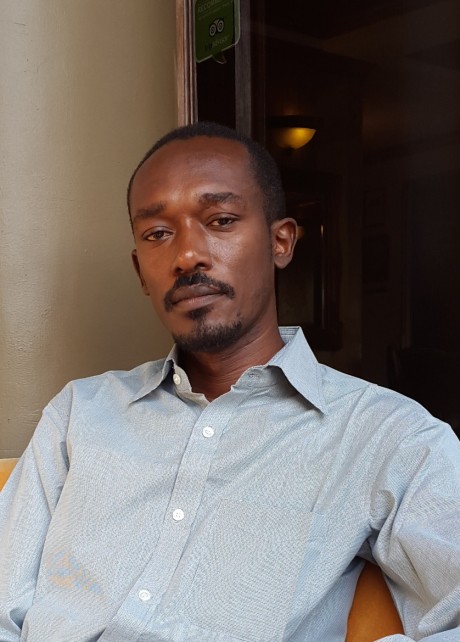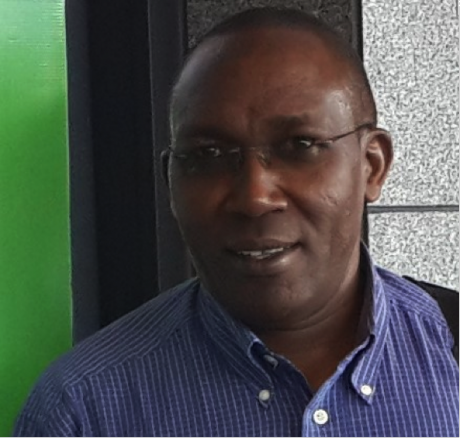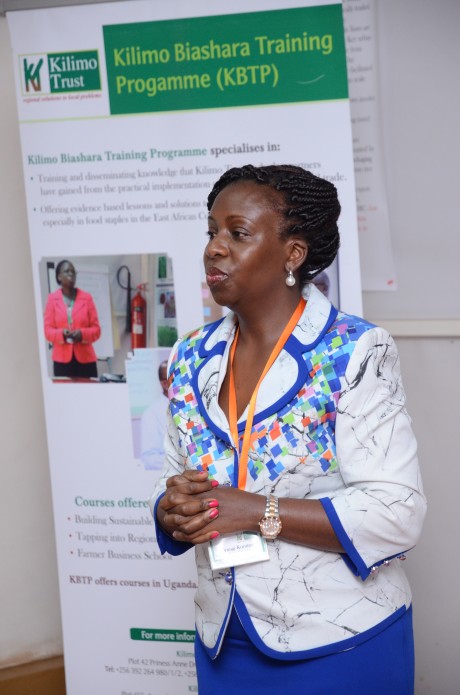When scientists from across the Nile river basin recently met to share findings and results, one conclusion in particular transpired: Increasing competition over resources such as land and water implies trade-offs that research can help expose.
During the past 18 months, seven project teams in the Nile-East Africa region of the CGIAR Research Program on Water, Land and Ecosystems have been working to develop recommendations and solutions for sustainable intensification of agriculture. Among other insights, the importance of making decision makers aware of trade-offs emerged as one top-level priority from several projects:
Sharing water benefits in water-scarce river basins

One project, Harnessing Floods to Enhance Livelihoods and Ecosystem Services, is exploring how to best use floods in different landscapes. In the Gash river basin in Sudan, for example, researchers are finding that farmers upstream and downstream are competing for a limited amount of floodwater:
Upstream, farmers use water to grow vegetables as well as to support horticulture such as lemon and mango trees. Sorghum dominates agriculture in Gash agriculture, which is the main user of Gash floodwaters. Downstream, water is essential to irrigate grazing areas and to support farmers’ charcoal production. But the amount of floodwater is not sufficient to support all other water uses, such as groundwater recharge of Gash aquifer, water supply of the city and surrounding areas, and more.
“Ideally, farmers upstream should decrease the area of land that they’re practicing horticulture on,” explains Almutaz Abdelkarim, a researcher at the Hydraulics Research Center in Sudan. “This would decrease their water use, leaving enough to support livelihoods downstream.” Upstream, farmers could compensate for the decrease in land use by using alternative farming practices, such as growing a watermelon crop after their sorghum crop. “That way, farmers upstream could earn the same level of income, but with a lesser use of water.”
Many efforts are carried out and investments allocated to improve the Gash area, and the project plans to share its findings with relevant decision makers to promote integrated management of the river basin.
Creating synergies in investment zones

Another project, Laying the Foundations for Effective Landscape-Level Planning for Sustainable Development in the SAGCOT Corridor, is working with decision makers and investors in Tanzania in the Ihemi cluster of the SAGCOT Corridor, which has been established to realize the region’s agricultural potential.
With many new, large agribusinesses starting out in the area, competition over water and land increases, and it becomes a priority to create mechanisms to ensure that smallholder farmers can also benefit from economic development, says Felix Kamau, Africa agriculture strategy director of The Nature Conservancy:
“Otherwise, you might have these big investments surrounded by poor farmers, who do not share their benefits.”
But possibilities for generating mutual benefits do exist: Smallholders can benefit from the technical extension services that big businesses provide as well as from the market integration that for example an outgrower model can facilitate. On the other hand, large agricultural businesses in the cluster depend on smallholders to take good care of the watershed and protect the ecosystem services, such as clean water supply, that their businesses depend on.
“I know that some people are critical of the outgrower model, but we are working with the SACGOT secretariat to put in place best -practice investor guidelines, based on sustainable practices to enhance social inclusivity and fairness alongside environmental sustainability.”
The project also works to provide investors and policy makers in the corridor with tools that can help facilitate greater gender mainstreaming to ensure that women, as well as men, are able to benefit from new investments and interventions.
Closing the gender gap in food trade

The Water, Land, Ecosystems and Trade in Staples (WaLETS) project is also working to break down constraints faced by women, specifically when it comes to growing and trading food.
In the East African Community (EAC), increasing agricultural production to boost food and nutrition security is a top priority. But, scientists say that the EAC fails to recognize the importance of regional trade, ecosystems and natural capital, and, in particular, women’s access to both.
Birungi Korutaro of the Kilimo Trust explains: Women in the region contribute approximately 80 percent of the labor in agriculture. In Uganda, for example, women in rural areas are also responsible for 90 percent of the total food production in Uganda. Furthermore, up to 85 percent of cross-border, informal traders in the EAC are young women.
“But, women do not have access to or control over resources such as land. Only 7 percent of women in Uganda own land – in Tanzania, it’s less than 5 percent,” says Korutaro. “Furthermore, women don’t have easy access to markets. In fact, they often face violence, harassment and ‘unofficial fees’ when they are trading across borders. All of this despite the fact that women are the ones holding the key to food security in East Africa.”
Research has estimated that agricultural productivity in the EAC could increase by 20 percent if women’s access to resources, such as land, seed and fertilizers, were equal to that of men, and that more equal access would also lead to more sustainable use of natural resources.
The project is working to expose gender gaps and shortcomings in policies across the EAC to make decision makers aware of the trade-offs that exist between agricultural production in suitable agro-ecologies, regional trade and equitable access. It plans to share its recommendations on how to proactively promote the participation of women in trade, in order to boost food security as well as exports and revenue for the various countries, with the private sector, EAC national governments and the EAC secretariat.

